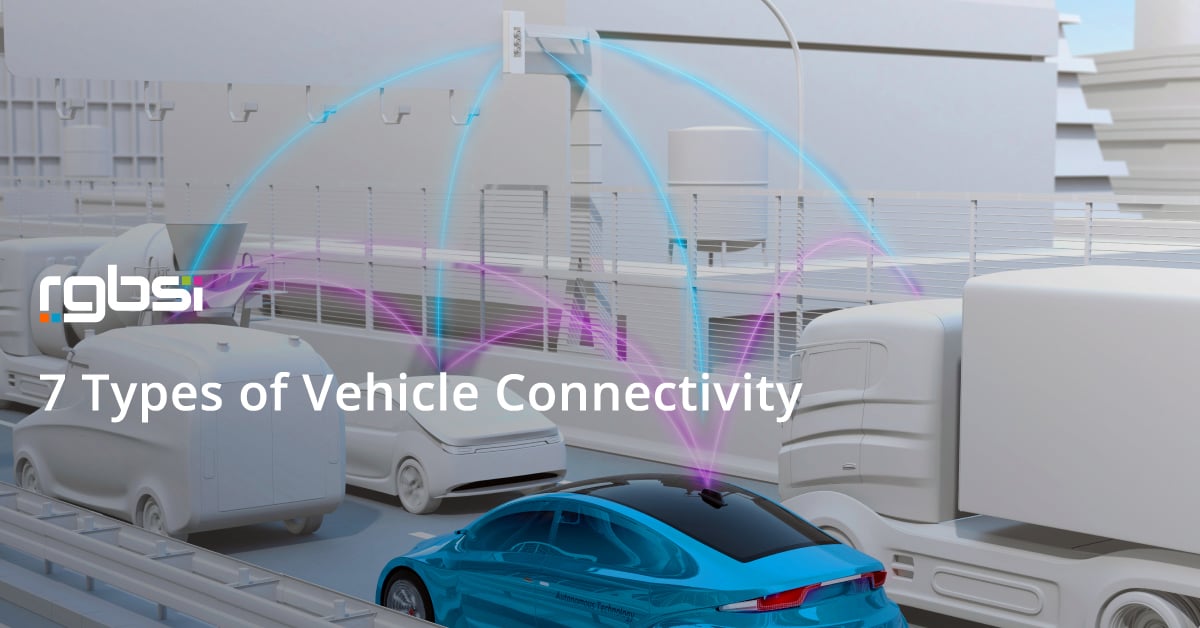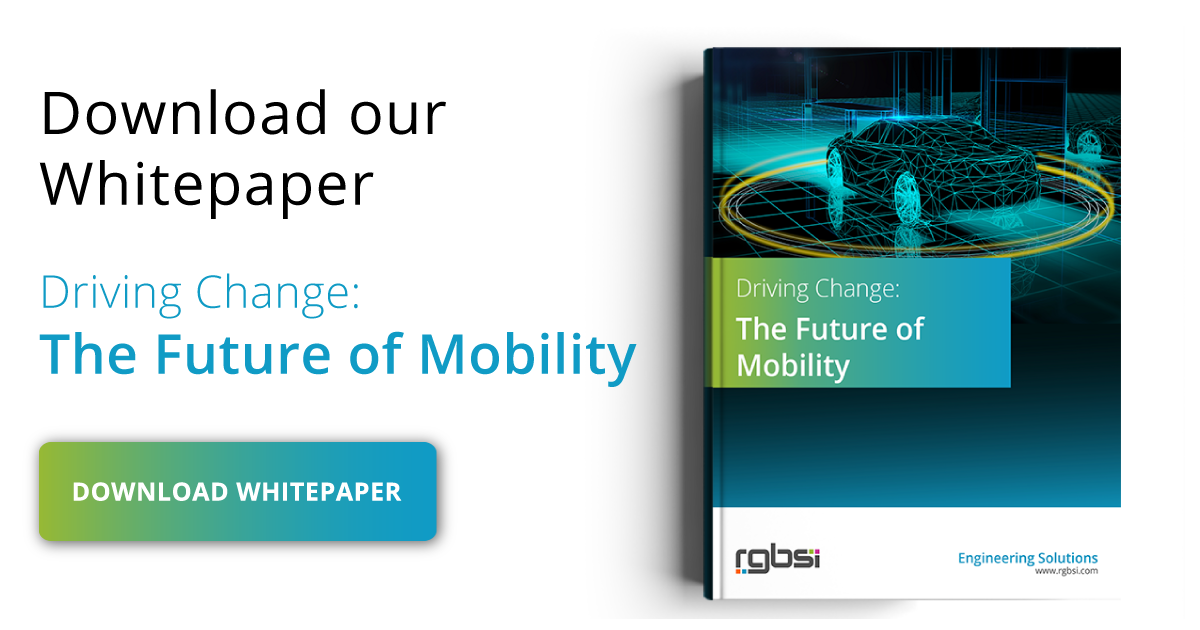
We are currently living an exciting era, where the convergence of automotive and information technologies (IT) are finally happening. The general availability of high-speed broadband Internet, the increasing number of sensors both, in vehicles and roads, as well as the widespread implementation of the Internet of Things (IoT), is making vehicle connectivity possible.
In this article, we will explore the current state of different vehicle communication technologies that are at the core of this amazing convergence between both industries and the impact on the future of mobility.
Vehicle to Everything Communications (V2X)
At the top of vehicular communication systems is the vehicle to everything (V2X) communication. The concept of a “connected car” is not new to the automotive industry, however, the technology to make it possible (as well as the necessary communication standards) were not available until a few years ago.
You can think of V2X as the parent category of a broader set of communication technologies needed to achieve the goal of connecting vehicles with the world surrounding them. Literally.
The 7 types of vehicle connectivity encompassing V2X communications are:
- Vehicle to network (V2N)
- Vehicle to infrastructure (V2I)
- Vehicle to vehicle (V2V)
- Vehicle to cloud (V2C)
- Vehicle to pedestrian (V2P)
- Vehicle to device (V2D)
- Vehicle to grid (V2G)
Same as communication itself, V2X should not be viewed as a static set of technologies but as an ever-growing group that is constantly evolving and adapting to emerging challenges. In that regard, each subcategory has specific concerns, strengths, and weaknesses. That is what makes the V2X concept so powerful, it takes advantage of the synergy between the different technologies making the whole greater than the sum of its parts.
1. Vehicle to Network (V2N)
Thanks to vehicle to network (V2N) communication, vehicles can use cellular networks to communicate with the V2X management system. V2N also uses the dedicated short-range communications (DSRC) standard to interact with other vehicles as well as the road infrastructure. This level of connectivity allows vehicles to be considered as a “device”, just like smartphones, tablets, and wearables devices. Accessing mobile-network operators’ LTE, 5G infrastructure and DSRC systems allow vehicles to:
- Receive broadcast alerts regarding road conditions (accidents, congestion, weather, etc.) also known as vehicle to infrastructure (V2I) direct communications.
- Communicate with nearby vehicles (via the cellular network and DSRC) also known as vehicle to vehicle (V2V) direct communications.
- Communicate with data centers and other devices connected to the Internet (vehicle to cloud communications)
- Establish communication with pedestrians’ devices (vehicle to pedestrian communications)
Using LTE, 5G, and DSPC (which is considered an evolution of Wi-Fi exclusive to vehicles), V2N allows vehicles to reliably interact with infrastructure, other vehicles, other devices, and even pedestrians.
2. Vehicle to Infrastructure (V2I)
Vehicle to infrastructure (V2I) communication is an integral part of intelligent transportation systems (ITS) that consists of bidirectional exchange of information between the vehicle and the road infrastructure. This information includes vehicle-generated traffic data gathered from other vehicles, data from sensors installed in the road infrastructure (cameras, traffic lights, lane markers streetlights, road signs, parking meters, etc), and data broadcasted from the ITS (speed limits, weather conditions, accidents, etc).
As explained earlier, this information interchange is done wirelessly by means of the cellular network and/or dedicated short-range communication (DSRC) frequencies. The technology behind V2I and ITS is endorsed by the European Union as well as the United States Department of Transportation Intelligent Transportation Systems Joint Program Office. The goal of V2I is to enhance road safety and prevent accidents by giving drivers real-time information regarding different conditions in the road. Moreover, V2I and ITS technologies are key to future autonomous vehicles that will rely on this valuable information.
3. Vehicle to Vehicle (V2V)
As its name implies, vehicle to vehicle (V2V) communication enables vehicles to exchange data in real-time. This interchange is done wireless via dedicated short-range communication (DSRC) frequencies, the same used in V2I communications. Thanks to V2V, vehicles can share their speed, location, and heading, as well as any other relevant information, giving the system a 360-degree representation of its surroundings. Since V2V communications were conceived as a mesh network, each vehicle becomes a node that can capture, send, and retransmit signals. Since V2V is an integral part of V2X and V2N, nodes also include smart traffic signals, road sensors, and other V2I components.
According to NHTSA, V2V technology could prevent 615,000 motor accidents. As a result of the mesh design, vehicles fitted with V2V technology count with real-time information of everything happening in a radius of 300 meters around them. Cutting-edge driving assist systems used by several top carmakers can use that information to alert the driver about an imminent hazard, instantly, enhancing road safety.
4. Vehicle to Cloud (V2C)
Vehicle to cloud (V2C) communication leverages V2N access to broadband cellular mobile networks to offer data exchange with the cloud. Some applications of this technology include:
- Over the air (OTA) updates vehicles’ software
- Redundancy to DSRC communication
- Remote vehicle diagnostics
- Bidirectional communication with household appliances also connected to the cloud (IoT)
- Bidirectional communication with digital assistants
In a no distant future, V2C could also have an important role in shared mobility. For instance, drivers’ preferences could be saved in the cloud and used when carsharing to adjust the seat position, mirrors, radio stations, and more automatically.
5. Vehicle to Pedestrian (V2P)
One of the newest subcategories of the V2X ecosystem is vehicle to pedestrian (V2P) communication. Other V2X technologies such as V2V and V2I involve cars and road infrastructure purposively prepared to communicate with each other. In some cases, like wheelchairs, bicycles, and strollers, a smart sensor could be implemented to create awareness about its presence. But pedestrians walking and children playing in the street are a whole different history. Some carmakers use in-vehicle systems such as LiDAR technology to facilitate collision warnings, 360-degree cameras, and blind spot warnings to detect pedestrians. However, the reliability of such approaches varies. This explains why a new generation of handheld devices and mobile apps are being developed to make drivers aware of possible collisions.
6. Vehicle to Device (V2D)
You can think of vehicle to device V2D as a subset of V2X communication that allow vehicles to exchange information with any smart device, usually via Bluetooth protocol. A typical application of this technology is Apple’s CarPlay and Google’s Android Auto that allow smartphones, tablets, and wearables to interact with the vehicle’s infotainment system.
7. Vehicle to Grid (V2G)
Last but not least, vehicle to grid (V2G) communication is a relatively new member of the V2X group of technologies that provides bidirectional data exchange between plug-in hybrid vehicles (PHEV), battery electric vehicles (BEV), and even hydrogen fuel cell vehicles (HFCEV) with the smart grid in support of electrification of transport. Thanks to V2G communication, the next-gen electric grid will be able to balance loads more efficiently as well as reduce utility bill costs.
About RGBSI
At RGBSI, we deliver total workforce management, engineering, quality lifecycle management, and IT solutions that provide strategic partnership for organizations of all sizes. As an organization of engineering experts, we understand the importance of modernization. Our engineering solutions provide clients with agility and enhancement through optimizing the value chain to meet industry protocols and full product specifications. Learn more about our automation and digital engineering services.












